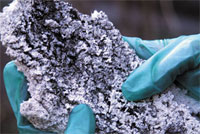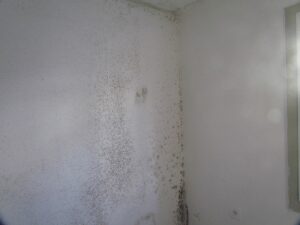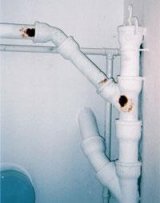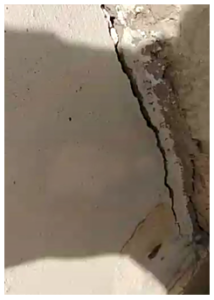Mold in the basement in particular and in the house in general
Mold in the basement in particular and in the house in general
Afraid of the possibility of mold spreading in your home? You have come to the right place!

Mold in the basement in particular and in the house in general www.denber.net
In this remediation guide, we cover common mold-related problems and their effects, including:
- How can mold be invisible/dormant in a home? (In plaster walls between plasterboards, behind cabinets, under parquet floors, under wallpaper on the walls, above a coffered ceiling, under a tiled roof, in the basement, in bathrooms and kitchens and more…)
- Why is invisible mold dangerous? (the health damage caused to the respiratory tract)
- When should you contact a professional mold removal company?
- How can mold affect the foundation or structural integrity of your home?
And much more!
How invisible things like mold can destroy a home
Most homeowners know that mold can cause serious trouble and hefty repair bills. But did you know that invisible mold can quietly destroy your home? It sounds scary, and unfamiliar, but it can be, and there are some things you can do to prevent it from taking over your home.

Mold in walls denber colors www.denber.net
Table of Contents:
- How can mold be invisible? (see related articles)
- Why is invisible mold dangerous?
- What should you do if you find invisible mold?
Mold grows anywhere as long as there is moisture and any organic matter it can feed on. In most homes, the basement provides an excellent place for mold to multiply quickly. Not only does mold multiply quickly, but it can also cause health problems such as asthma, stuffy nose or chronic runny nose, headaches, coughs and allergies.
How invisible things like mold can destroy a home
If the mold in my basement is a potential health and safety hazard, how do I get rid of it ?
This is the question we want to answer in this article. We will begin by examining how mold can be detected, how to deal with invisible mold, what products to use and not to use when dealing with mold, and determine when to call in a mold treatment specialist and what it will cost you.
What causes mold to grow in a basement ?
Molds are everywhere because they are part of the natural environment. The United States Environmental Protection Agency (EPA) says that “outdoors, molds play a role in nature by breaking down dead organic matter such as fallen leaves and dead wood, but indoors mold growth should be avoided.”
From the above statement, it is clear that there is likely to be small amounts of mold in any basement. This mold usually dies before it multiplies to alarming levels.
Mold is often found in the basement because this part of the house provides the most suitable environment for mold growth. It has the food required for mold to grow. This food source can be paper, cardboard box or wood. Also, the heat and humidity in the basement provide an optimal environment for the growth of mold.
How invisible things like mold can destroy a home
How do you identify mold in the basement ?
To kill mold and ensure it does not regroup and attack, it is necessary to be able to identify it.
The Canadian mold, toxic and pollution remediation company, Cleanfirst.ca, says that “the easiest way to check for mold is by smell. Adding ventilation to the basement will make it much easier to detect strange smells.”
Apart from the smell, you can identify mold by seeing visible spores. However, once you see it, you have a major mold problem because what you see is literally the tip of the iceberg .”
Since mold can grow undetected, the best way to determine if there is mold in your basement is to know the signs that you may have a mold problem in your basement:
Water damage : A recently flooded basement is likely to contain mold even when it dries out.
Allergic reactions : When everyone starts experiencing symptoms such as a stuffy or runny nose, itchy eyes or throat, skin irritation and respiratory infections that go away when the people leave the basement or your home, there may be a mold problem in your home.
Physical damage : Mold damage can manifest itself through soft spots, water marks, cracks or paint that begins to bubble on the ceiling or walls.
How invisible things like mold can destroy a home
Invisible basement pattern
Most people think it will be easy to see or identify mold in their basements, but falling into this trap can cost you thousands of shekels in home repairs because the problem gets worse and can cause illness.
It is a common belief that looking for visible signs of mold is not the best way to check for mold growth. This is because mold likes to grow in damp areas where people don’t usually walk or look so you’re more likely to find mold under and behind cabinets, behind the fridge, on damp walls, inside double plaster walls and behind walls rather than outside.
The truth is that “invisible mold” is not really invisible; It’s just hidden from view. Invisible mold is any mold growth that happens out of sight, making it significantly more dangerous.
It is dangerous because it can grow undetected behind walls and under floors for years before the homeowner discovers it. It can even lie dormant for ages before becoming a serious health and safety hazard.
Why should you get rid of mold in the basement ?
According to the Centers for Disease Control and Prevention (CDC), mold can have negative health effects on people. The same organization reports that people with allergies are more sensitive to mold.
The CDC also notes that in the presence of mold, “people with chronic respiratory disease (eg, chronic obstructive pulmonary disorder, asthma) may experience difficulty breathing.” Another group specifically mentioned by the CDC is immunosuppressed people.
Besides the fact that mold can make people in your home sick, it is also unsightly and can cause a lot of property damage. Let’s look at other reasons you should take mold seriously and consider ways to get rid of it.
How invisible things like mold can destroy a home
Mold can grow undetected
Mold in your home is never a good thing, but invisible mold is the worst because it just keeps spreading without you realizing there’s a problem. Spores under your sink due to a leak is definitely not a good sign, no matter how few spores there are. However, it is still better than a hole leaking behind the wall that feeds mold and promotes growth for months or even years.
Mold in the basement in particular and in the house in general

Mold in the basement in particular and in the house in general www.denber.net
When looking for hidden mold, check :
- Behind wallpapers, coverings and plaster walls
- The opposite side of the ceiling tiles
- Under carpets and rugs
- Wall surfaces behind furniture
- air ducts
- Areas close to water pipes

Mold in the basement in particular and in the house in general www.denber.net
Mold in sewer pipes not properly sealed
How invisible things like mold can destroy a home
It can destroy your house
The fact that invisible mold can go undetected is scary. Add to that the enormous damage it can cause, and you’ve got yourself a complete nightmare.
Below is an example of such a house:
Apparently, the owner of the house bought the property for his mother and moved her to live there. She suffered from allergy symptoms and breathing problems for nine long years. However, the family did not know that the house was at fault.
They purchased a house that was “renovated” and was beautifully done, based on the pictures they showed me. New kitchen, new hardwood floors, fresh paint; Everything looks great.
It wasn’t until they finally took the mother to specialist doctors to determine why she was having health problems that they discovered the mold was to blame.
When it was clear that the problem was mold, the family searched the house for signs of mold growth. They found musty smells in the basement and some dampness in the attic, but after they started taking out walls, they found the real problem.
Mold spread throughout the house. The double walls with rockwool were full of mold and green that grew and spread inside the walls and also spread under the floor. They couldn’t even find a reason like water leakage or any reason for the mold to grow. They could only think of the naturally high humidity in the area which without a ventilation system or dehumidifier/dehumidifier to combat the humidity inside the house allowed the mold to spread.
The mold penetrated into the concrete floor into cracks and widened them, penetrated the concrete columns of the house into small cracks and widened them into large ones, the amount of cracks created due to the mold and greenness completely damaged the structural stability of the house. which required a very expensive general renovation and strengthening of hundreds of thousands of shekels.

Mold in the basement in particular and in the house in general www.denber.net
How invisible things like mold can destroy a home
Mold reduces the value of the property
While it may be easy to ignore a basement mold problem when you own the home and don’t think too much about the future, you may face challenges trying to sell it. You can hide the phenomenon by painting over it, but this constitutes a criminal offense of failure to disclose to the buyer who can file a claim after the fact. The law requires potential buyers to be informed of any defect.
When it comes to mold’s effect on property value, mold isn’t as big of a visible problem as warping hardwood floors and bad odor during a buyer’s inspection. These will be an obstacle to initiating a sale for most buyers, let alone those aware of the short- and long-term health problems it creates.”
Mold in any part of the house affects both the seller and the buyer. For the seller, once a buyer notices mold in the property, they may begin to question the seller’s integrity regarding the defects in the home. On the other hand, the buyer will become more cautious, and the seller will have to work harder to prove that the mold problem is not indicative of more significant problems.
Dealing with mold in the basement
Now that it is clear that mold in your basement is causing problems, we need to look at how we can deal with the challenge. However, it is important to remember that it is impossible to get rid of all mold and mildew spores indoors; Some mold spores will be found floating in the air and house dust.
However, the good news is that the mold spores floating around will not multiply. Unless they find the right environment. Now, let’s look at some common ways to deal with basement mold. Before it starts or after it starts growing.
How invisible things like mold can destroy a home
The treatment of mold:
If you find just a tiny bit of mold. and manage to limit the humidity. – and you go to great lengths to make sure that there is no more mold growing elsewhere. – You can use a do-it-yourself solution. However, you should be careful what you use.
Most people on the internet and some professionals repeat the same suggestion: spray/apply bleach to the affected area. (Vinegar does a better job. Vinegar has anti-fungal and anti-bacterial properties. But its pungent smell is very unpleasant indoors, so bleach is used). It’s fine if it’s on a small area and without reaching parquet floors, for example. There may cause damage. But this does not solve the problem and it is only the beginning of the process.
After about an hour, the bleach should be rinsed thoroughly with water so that no residue remains on the wall. These residues will later cause the paint to peel. It can be done with a cloth dipped in water several times until the bleach and mold are completely removed. Stubborn mold should be rubbed with No. 100 glass paper to completely remove it from the wall as much as possible. And again clean with a damp cloth.
Now, without waiting, an antifungus solution is applied to the area, the function of which is to disinfect and “eliminate” the remains of mold spores in the holes in the wall. 30 minutes later the disinfection phase was over. and can be washed with water with a damp cloth to remove all residual pollutants.
Now we will wait for the wall to dry completely for at least 24 hours. and apply a layer of Bacterinol paint . If the wall is an exterior wall on which condensation forms due to temperature differences, condensation that causes mold to develop, we will add 3 layers of Thermosil 200 paint for thermal insulation and to prevent condensation. If the outer wall is made of concrete such as MMD or prefabricated walls – we will add 2 more layers of Thermosil 200 to improve the insulation and remove the dew point.
To finish, we will add another layer of white Bacterinol or, if a different color is required, we will paint with Dunbarcryl 4000 in any shade from any catalog.
How invisible things like mold can destroy a home
Preventing mold in the basement in the long run
If you don’t want to continue treating mold in your basement indefinitely. You will have to find ways to ensure that you get rid of the problem once and for all. Here are some ways that can help you minimize the risk of mold in your basement:
- Limiting the level of humidity in the air. – Because molds thrive in areas with high humidity levels. You should limit the humidity in the house to stop the growth of mold.
- If the walls are in contact with an area that is always wet. You need to get an industrial dryer to keep the area dry. You should also invest in a dehumidifier to limit the humidity in the air. If a roof or plumbing leak can be confirmed to be the culprit, repair the problem immediately to prevent the mold from getting worse.
Whatever you do, don’t make a repair until you fix the underlying problem .
Some useful tips on how to prevent mold growth in your basement:
- Clean regularly with a vacuum cleaner with a high-efficiency particulate air (HEPA) filter. So mold spores will not get a chance to accumulate.
- Avoid placing damp items in the basement.
- Reduce crowding in the basement as it can create a suitable environment for mold growth.
- Repair leaks without delay.
- Keep your basement dry with exhaust fans.
- Keep humidity in the basement between 30 and 50%.
- Do not install carpet in the basement.
- Avoid plants in the basement.
- Make sure that the water flows away from the house and not towards it when it rains.
How invisible things like mold can destroy a home
When should you hire an expert and how much will it cost ?
If you have a serious mold problem, it’s best to call in professionals. You’ll also need a professional if you can smell or see the mold but can’t determine the source of the problem.
A professional will also be required if the problem has grown to the point where it cannot be solved with simple DIY methods. Also, if you have any allergies that the mold may trigger. You may want to avoid trying to deal with the mold problem yourself.
As for cost, you can expect to pay between $200 and $600 for a certified mold inspector to determine the extent of your mold problem.
Once it is clear about the extent of the mold problem, this repair can cost anywhere from $10 to $25 per square foot.
Denver Projects Company – Execution with over 30 years of experience
 English
English עברית
עברית Русский
Русский